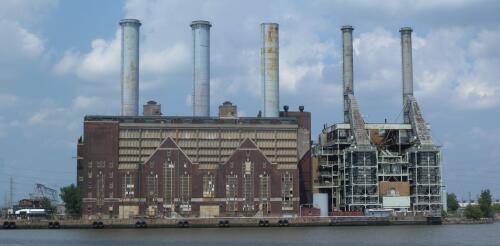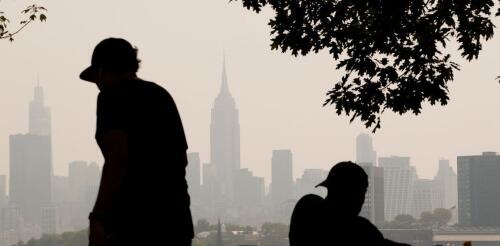Air pollution
The U.S. is nearing the end of one of its hottest summers on record. Across the nation, heat waves have driven peak electricity demand on some days to levels far exceeding seasonal averages. Grid operators rely on so-called “peaker” plants to ensure they will have enough supply to meet these demand surges. Peaker units can start up quickly and at relatively low cost, but they typically burn more fuel per unit of electricity produced than other types of fossil fuel units. Because they are less efficient than other plants, peakers typically run only during high-demand periods. Historically, peakers have run for less than 10% of the year, often for just a few hours at a stretch. Nonetheless, their higher emissions per unit of electricity produced raise environmental and health concerns. As of 2021, there were 999 peaker plants across the U.S., in all 50 states. About 70% of these plants burned natural gas, and the rest were powered by oil and coal. To reduce air p...
Wildfire smoke from Canada’s extreme fire season has left a lot of people thinking about air quality and wondering what to expect in the days ahead. All air contains gaseous compounds and small particles. But as air quality gets worse, these gases and particles can trigger asthma and exacerbate heart and respiratory problems as they enter the nose, throat and lungs and even circulate in the bloodstream. When wildfire smoke turned New York City’s skies orange in early June 2023, emergency room visits for asthma doubled. In most cities, it’s easy to find a daily air quality index score that tells you when the air is considered unhealthy or even hazardous. However, predicting air quality in the days ahead isn’t so simple. I work on air quality forecasting as a professor of civil and environmental engineering. Artificial intelligence has improved these forecasts, but research shows it’s much more useful when paired with traditional techniques. HereR...
Kids born in 2020 worldwide will experience twice the number of wildfires during their lifetimes compared with those born in 1960. In California and other western states, frequent wildfires have become as much a part of summer and fall as popsicles and Halloween candy. Wildfires produce fine particulate matter, or PM₂.₅, that chokes the air and penetrates deep into lungs. Researchers know that short-term exposure to wildfire PM₂.₅ increases acute care visits for cardiorespiratory problems such as asthma. However, the long-term effects of repeated exposure to wildfire PM₂.₅ on chronic health conditions are unclear. One reason is that scientists have not decided how best to measure this type of intermittent yet ongoing exposure. Environmental epidemiologists and health scientists like us usually summarize long-term exposure to total PM₂.₅ – which comes from power plants, industry and transportation – as average exposure...
Bornean orangutans are one of three orangutan species, all critically endangered. They thrive in carbon-rich peat swamp forests on the Indonesian island of Borneo. These habitats are also the sites of massive wildfires. Indonesian wildfires in 2015 caused some of the worst fire-driven air pollution ever recorded. The fires were driven by an El Niño climatic cycle, which caused especially dry weather in the region. Compared to other wildfires, peatland fires smolder underground and produce exceptionally high levels of hazardous gases and particulate matter – a leading cause of global pollution-related deaths and illnesses. Orangutans are well known as an “indicator species” – one that can serve as a proxy for the health of an ecosystem. Changes in their environments often cause conspicuous changes in the apes’ health and behavior. Frequent and persistent exposure to toxic smoke could have severe consequences for orangutans and other wildlife....
As the eastern U.S. and Canada reeled from days of thick wildfire smoke in early June 2023, millions of people faced the reality of climate change for the first time. Shocking images of New York under apocalyptic orange skies left many people glued to air quality indices and wondering whether it was safe to go outside. What they might not realize is that the air many of them breathe isn’t healthy even when wildfire smoke isn’t filling the sky. In fact, the air that 99% of the world’s population breathes is not safe, according to the World Health Organization. Air pollution is everywhere, in cities and in the countryside, visible and invisible. It kills an estimated 7 million to 10 million people a year, taking 2.2 years off global average life expectancy. Worldwide, that’s a combined 17 billion life years. There is growing evidence that even low levels of air pollutants damage the human body, increasing the risk of cardiovascular and respiratory illness...




